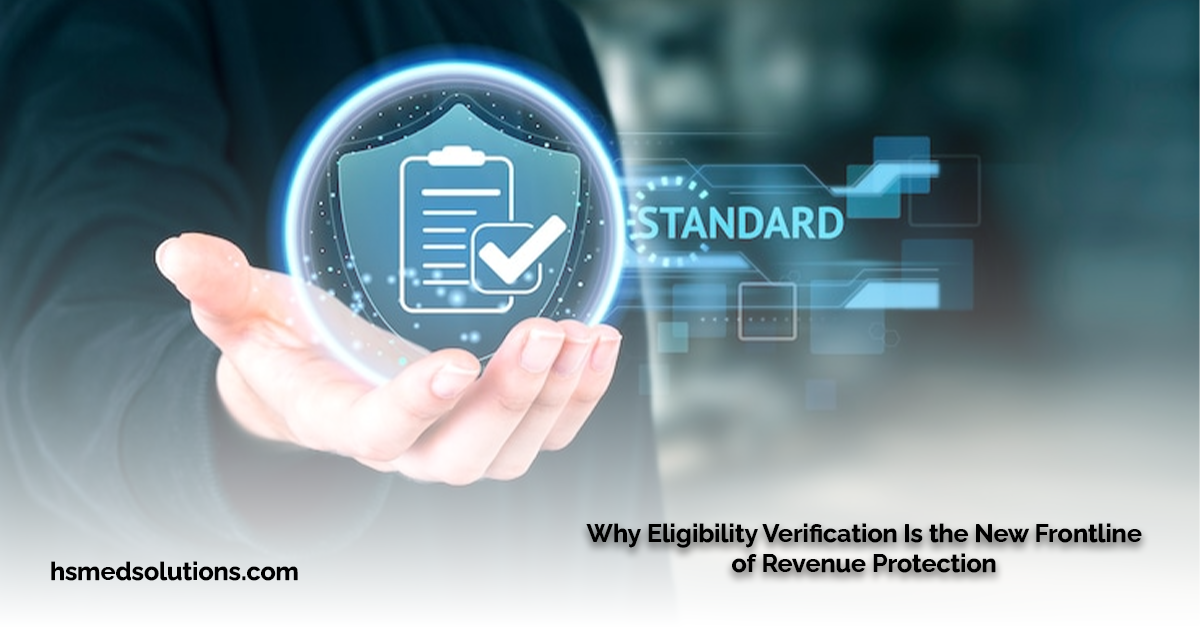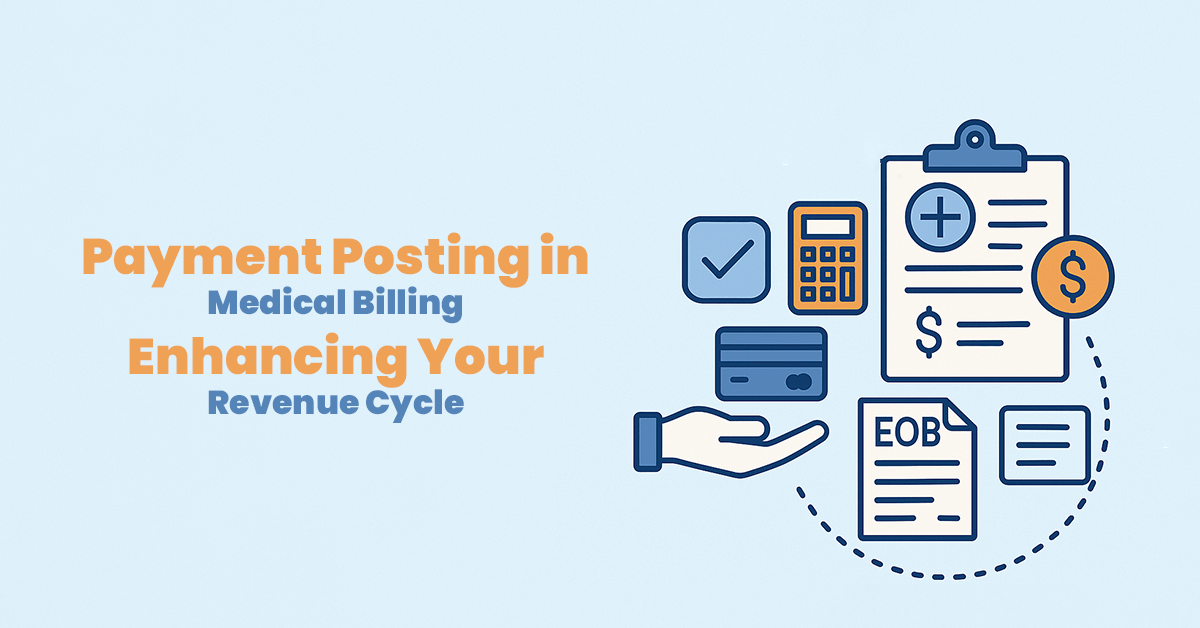Providing Exceptional Urgent Care Services
Top-Quality Urgent Care Services
At HS Med Solutions, we understand that your health is of the utmost importance. That's why we proudly deliver top-quality urgent care services, focusing on exceptional patient care.Whether you need treatment for a minor injury or illness, or you require more comprehensive care, our team of experienced healthcare providers is here to help.
Introduction to Urgent Care and Emergency Clinics
Urgent care centers and emergency walk-in clinics have become indispensable parts of the healthcare system, providing essential services that ensure patients receive prompt medical attention when needed. These facilities are specifically designed to handle non-life-threatening conditions, offering a critical alternative to both primary care and emergency rooms. By understanding the distinctions and benefits of urgent care centers and emergency walk-in clinics, patients can make informed decisions about where to seek care.
What Are Urgent Care Centers and Emergency Walk-In Clinics?
Urgent care centers are medical facilities equipped to treat various minor injuries and illnesses that require immediate attention but are not severe enough to necessitate a visit to an emergency room. Typical services include treatment for sprains, fractures, cuts requiring stitches, infections, and routine vaccinations. These centers often operate beyond regular office hours, including evenings and weekends, providing a convenient option for immediate care when primary care offices are closed.
Emergency walk-in clinics, while similar to urgent care centers, are often better equipped to handle more severe conditions that still do not reach the threshold of emergency room care. These clinics might offer advanced diagnostic services like imaging and lab tests on-site, enabling comprehensive care for conditions that require prompt but not critical intervention.
Differences Between Urgent Care, Emergency Care, and Primary Care
Understanding the differences between urgent care, emergency care, and primary care is crucial for both patients and healthcare providers.
Urgent Care: These centers provide immediate attention for non-emergency conditions. They are ideal for issues like minor fractures, sprains, infections, and minor cuts. Urgent care centers are designed to offer quick and efficient care, often without the need for an appointment.
Emergency Care: Emergency rooms are equipped to handle life-threatening conditions and serious injuries. Situations such as severe chest pain, difficulty breathing, major trauma, and significant bleeding require the comprehensive resources available in an emergency room. Emergency care is critical for conditions that pose an immediate risk to life or long-term health.
Primary Care: Primary care providers manage overall health and wellness, offering preventive care, routine check-ups, and management of chronic conditions. They serve as the first point of contact for health concerns and coordinate care with specialists as needed. Primary care is essential for maintaining long-term health and managing ongoing health issues.
Urgent care centers and emergency walk-in clinics play a pivotal role in the healthcare ecosystem, offering accessible, immediate care for conditions that are urgent but not life-threatening. This ensures that patients receive the right level of care when they need it most, while also reducing the strain on emergency rooms and enhancing overall healthcare efficiency.
Availability and Accessibility

The Growing Demand for Immediate Medical Attention
The increasing demand for “urgent care open now” and “24-hour urgent care clinics near me” reflects the public’s growing need for immediate medical attention outside of regular office hours. These search trends highlight how urgent care centers have become a crucial component in the healthcare landscape, providing accessible and timely care when primary care services are unavailable.
Bridging the Gap Between Primary Care and Emergency Rooms
Urgent care centers are designed to bridge the gap between primary care and emergency rooms, offering a convenient alternative for patients who need prompt attention but do not require the extensive resources of an emergency room. These centers are typically open evenings and weekends, ensuring that medical care is available beyond the traditional 9-to-5 schedule. This extended availability is particularly beneficial for individuals with busy lifestyles or those who experience sudden health issues outside of regular office hours.
Extended Hours for Busy Lifestyles
Moreover, urgent care centers are strategically located to serve local communities, making it easier for patients to find immediate care close to home. By providing walk-in services without the need for an appointment, these centers offer a flexible and accessible option for non-emergency situations, reducing the need for patients to endure long waits in emergency rooms or delay care until primary care offices reopen.
Strategic Locations for Community Access
The accessibility of urgent care centers also alleviates the burden on emergency departments, allowing them to focus on treating life-threatening conditions. This not only improves the efficiency of emergency rooms but also ensures that patients receive the appropriate level of care for their medical needs. Urgent care centers can handle a variety of issues, including minor injuries, infections, fractures, and routine vaccinations, providing comprehensive care in a timely manner.
Enhancing Healthcare Accessibility and Efficiency
By filling the gap when primary care is unavailable, urgent care centers enhance the overall accessibility and efficiency of the healthcare system. They offer a critical service that meets the immediate needs of patients, ensuring that quality medical care is always within reach, regardless of the time of day.
Services Offered at Urgent Care Centers
Urgent care centers are equipped to provide a wide range of medical services, ensuring that patients receive prompt and effective treatment for various health concerns. These facilities are designed to handle both common and specialized medical needs, offering a comprehensive solution for immediate care.
Common Services Provided

Urgent care centers offer numerous services that address a variety of minor health issues, making them an ideal choice for non-emergency situations. Some of the most common services include:
- Minor Injuries: Treatment for sprains, strains, minor fractures, cuts, and bruises. Urgent care centers can provide stitches, splints, and other necessary interventions to address these injuries promptly.
- Infections: Diagnosis and treatment of common infections such as respiratory infections, ear infections, urinary tract infections, and skin infections. Quick access to care helps prevent the progression of these conditions.
- Vaccinations: Routine immunizations, including flu shots, tetanus shots, and travel vaccinations. Urgent care centers offer a convenient option for staying up-to-date with essential vaccines.
- General Medical Care: Services such as physical exams, diagnostic tests (e.g., X-rays and lab tests), and treatment for common illnesses like colds, flu, and allergic reactions.
Specialized Services

In addition to handling common medical issues, some urgent care centers also offer specialized services to cater to more specific health needs. These services expand the scope of care available at urgent care centers, providing patients with more comprehensive treatment options:
- Vascular Surgery: While not all urgent care centers offer this service, those with advanced facilities may provide initial evaluation and treatment for vascular conditions. This can include management of minor vascular injuries or referrals for more complex surgical interventions.
- Dialysis Centers: Some urgent care centers are equipped to offer dialysis services for patients with kidney disease. This specialized care ensures that patients with chronic conditions can receive necessary treatments without the need for a hospital visit.
Urgent care centers play a crucial role in delivering immediate, accessible medical care for a wide range of health concerns. By offering both common and specialized services, these centers provide a valuable resource for patients seeking prompt attention for their medical needs. This comprehensive approach ensures that patients receive timely and appropriate care, enhancing overall health outcomes and reducing the strain on emergency rooms and primary care offices.
Benefits of Choosing Urgent Care

When faced with a medical issue that requires immediate attention, choosing an urgent care center can offer significant advantages over emergency rooms and waiting for a primary care appointment. Here’s why urgent care centers are often the preferred choice for non-life-threatening conditions:
1. Cost-Effective Compared to Emergency Rooms
One of the primary benefits of opting for an urgent care center is the cost savings. Urgent care facilities are designed to manage non-emergency medical needs efficiently, which means they operate with lower overhead costs compared to emergency rooms. Emergency rooms are equipped to handle severe and life-threatening conditions, which often results in higher medical bills due to the extensive resources and specialized care provided.
In contrast, urgent care centers focus on treating minor injuries, illnesses, and providing preventive services. This streamlined approach allows them to offer affordable care for patients, making it a more economical choice for those needing prompt attention for less severe health issues. By choosing urgent care, patients can avoid the high costs associated with emergency room visits while still receiving the necessary medical care.
2. Shorter Wait Times and Convenience for Non-Life-Threatening Conditions

Urgent care centers are known for their efficiency in treating non-life-threatening conditions with minimal wait times. Unlike emergency rooms, which are often crowded with patients facing critical health issues, urgent care facilities are specifically designed to provide quick and effective care for less severe conditions. This means that patients seeking treatment for minor injuries, infections, or other urgent but non-emergency situations can expect faster service.
Many urgent care centers offer walk-in services without the need for an appointment, making it easy for patients to receive care at their convenience. They also typically have extended hours, including evenings and weekends, which provides additional flexibility for those who need medical attention outside of regular office hours.
In summary, choosing an urgent care center provides substantial benefits, including cost savings and reduced wait times for non-life-threatening conditions. These advantages make urgent care a practical and efficient option for managing immediate medical needs, offering high-quality care without the lengthy delays and higher costs associated with emergency room visits.
Patient Experiences and Satisfaction
Ensuring positive patient experiences and high satisfaction levels is crucial for the success of any healthcare facility. This not only affects the quality of care provided but also influences the facility’s reputation and overall success. Here’s a closer look at the importance of patient reviews and feedback, and how patient engagement can enhance service quality:
1. Importance of Patient Reviews and Feedback
Patient reviews and feedback play a vital role in shaping the quality of care and service provided by healthcare facilities, including urgent care centers. Here’s why they matter:
- Insight into Patient Experience: Reviews offer valuable insights into how patients perceive their care. They highlight aspects of the service that are working well and identify areas needing improvement. This feedback helps healthcare providers understand patient expectations and address any concerns promptly.
- Trust and Credibility: Positive reviews build trust and enhance the credibility of healthcare facilities. Prospective patients often read reviews before choosing where to seek care, making a strong reputation based on patient feedback essential for attracting new patients.
- Quality Improvement: Regularly collecting and analyzing patient feedback allows healthcare facilities to make data-driven improvements. Whether it’s refining processes, enhancing patient communication, or addressing specific issues, feedback helps in continuously elevating the quality of care.
2. How Patient Engagement Improves Service Quality
Active patient engagement is a key factor in improving service quality and overall patient satisfaction. Here’s how it contributes:
- Enhanced Communication: Engaging with patients involves clear and open communication, which is crucial for understanding their needs and preferences. When patients feel heard and valued, they are more likely to be satisfied with their care. Engaged patients are also more likely to adhere to treatment plans and follow-up recommendations.
- Personalized Care: Patient engagement enables healthcare providers to offer more personalized care. By involving patients in their treatment decisions and tailoring care to their specific needs, providers can enhance the patient experience and improve health outcomes.
- Efficient Care Delivery: Engaged patients often participate in their care processes, such as scheduling appointments, providing necessary information, and managing their health. This active involvement can streamline care delivery, reduce wait times, and minimize misunderstandings, leading to a more efficient and satisfactory experience.
- Feedback Integration: Incorporating patient feedback into practice allows healthcare facilities to adapt and improve their services. For instance, if patients express concerns about wait times or staff interactions, addressing these issues can lead to tangible improvements in service quality and patient satisfaction.
In conclusion, patient reviews and feedback are essential for understanding and enhancing patient experiences. By actively engaging with patients and utilizing their feedback, healthcare facilities can significantly improve service quality, foster trust, and ensure a higher level of patient satisfaction. This commitment to continuous improvement not only benefits patients but also contributes to the overall success and reputation of the healthcare facility.
The Role of Technology in Urgent Care

Technology plays a crucial role in enhancing the efficiency and effectiveness of urgent care centers. By integrating advanced tools and systems, urgent care facilities can streamline patient information management, improve accessibility, and deliver higher-quality care. Here’s how technology impacts urgent care:
1. Use of Electronic Health Records (EHRs) to Streamline Patient Information
Electronic Health Records (EHRs) have revolutionized the management of patient information in urgent care settings. For instance, the “Epic Electronic Health Record” system is widely used for its comprehensive and integrated approach. Here’s how EHRs benefit urgent care:
- Centralized Information: EHRs provide a centralized platform for storing patient data, including medical history, test results, and treatment plans. This consolidation allows for quick access to comprehensive patient information, ensuring continuity of care and reducing the risk of errors.
- Improved Efficiency: With EHRs, urgent care staff can rapidly input and retrieve patient information, which speeds up the check-in process, diagnosis, and treatment. This efficiency helps in managing patient flow more effectively and reduces wait times.
- Enhanced Communication: EHRs facilitate better communication between healthcare providers. For example, if a patient needs follow-up care or a referral, the necessary information can be easily shared with other healthcare providers, ensuring coordinated and effective treatment.
- Data Accuracy and Security: EHR systems, such as Epic, enhance data accuracy by minimizing manual errors associated with paper records. They also include robust security features to protect patient information from unauthorized access.
2. Telehealth and Its Impact on Urgent Care Accessibility

Telehealth has become a transformative force in urgent care, expanding access to medical services and improving patient convenience. Here’s how telehealth influences urgent care:
- Extended Access: Telehealth allows patients to consult with healthcare providers remotely, which is especially beneficial for those who cannot visit an urgent care center in person. This accessibility is crucial for individuals who live in remote areas or have mobility issues.
- Convenience and Flexibility: With telehealth, patients can receive medical advice and treatment from the comfort of their homes, without the need to travel to a physical location. This flexibility makes it easier for patients to seek care for non-emergency conditions and follow up on treatment plans.
- Efficient Use of Resources: Telehealth can help manage patient volume by addressing less severe issues remotely, allowing urgent care centers to focus on in-person cases that require hands-on treatment. This efficient resource allocation improves overall service delivery.
- Enhanced Patient Engagement: Telehealth platforms often include features that allow patients to track their health, access educational resources, and communicate with their providers. These tools enhance patient engagement and adherence to treatment plans, leading to better health outcomes.
In summary, technology significantly enhances the functionality of urgent care centers. The use of Electronic Health Records (EHRs) like Epic streamlines patient information management, while telehealth expands access and improves convenience for patients. Together, these technologies contribute to more efficient, accessible, and effective urgent care services.
Future Trends in Urgent Care
The urgent care industry is evolving rapidly, driven by advancements in technology and changing healthcare needs. As the demand for immediate medical services grows, several key trends are shaping the future of urgent care centers:
1. Expansion of Services and More Centers Opening
Increased Service Offerings
Urgent care centers are expanding their range of services to meet the diverse needs of patients. Traditionally focused on minor injuries and illnesses, many centers are now incorporating specialized services such as:
- Chronic Disease Management: Offering care for chronic conditions like diabetes and hypertension.
- Behavioral Health Services: Providing mental health support and counseling.
- Advanced Diagnostics: Including on-site imaging and laboratory tests for more comprehensive evaluations.
Geographic Expansion
As the need for immediate care increases, more urgent care centers are opening across various regions, including underserved areas. This expansion is driven by several factors:
- Population Growth: Rising populations in suburban and rural areas create a demand for accessible healthcare services.
- Healthcare Accessibility: New centers aim to reduce barriers to care, ensuring that patients have convenient access to medical services.
Enhanced Patient Experience
Urgent care centers are focusing on improving the overall patient experience by offering:
- Extended Hours: Including late evenings and weekends to accommodate different schedules.
- Walk-in Services: Minimizing wait times with efficient, appointment-free care.
- Comfortable Facilities: Creating welcoming environments with modern amenities.
2. Integration of Advanced Medical Technologies and Data Analytics
Advanced Medical Technologies
The integration of cutting-edge medical technologies is transforming urgent care centers, leading to more accurate diagnoses and efficient treatments:
- Telemedicine: Expanding telehealth services to provide remote consultations, follow-ups, and management of non-emergency conditions.
- Wearable Devices: Utilizing wearable health monitors to track vital signs and provide real-time data for better management of chronic conditions.
- Artificial Intelligence (AI): Implementing AI tools for predictive analytics, helping to identify trends and optimize patient care.
Data Analytics
Data analytics plays a crucial role in enhancing the efficiency and quality of urgent care services:
- Population Health Management: Analyzing patient data to identify health trends and improve preventive care strategies.
- Operational Efficiency: Using data to streamline processes, manage patient flow, and optimize resource allocation.
- Personalized Care: Leveraging data to tailor treatment plans to individual patient needs, improving outcomes and satisfaction.
Integration with Broader Healthcare Systems
Urgent care centers are increasingly integrating with larger healthcare networks to provide cohesive care:
- Electronic Health Records (EHR) Integration: Ensuring seamless sharing of patient information across different healthcare providers.
- Care Coordination: Collaborating with primary care physicians, specialists, and hospitals to ensure continuity of care and effective treatment planning.
In summary, the future of urgent care is marked by an expansion of services, increased availability of centers, and the integration of advanced technologies and data analytics. These trends are driving improvements in patient care, accessibility, and operational efficiency, shaping the next generation of urgent care services.
Why Choose HS MED Solutions?
Specialized Expertise in Medical Billing and Revenue Cycle Management
HS MED Solutions provides tailored solutions for medical billing and revenue cycle management, ensuring that healthcare practices can focus on delivering exceptional patient care while we handle the complexities of billing. Our deep understanding of the healthcare industry allows us to optimize revenue processes and improve financial stability for your practice.
Streamlined Operations for Enhanced Efficiency
Our advanced billing solutions streamline administrative tasks, reduce errors, and speed up claim processing. By leveraging cutting-edge technology and best practices, we enhance operational efficiency, allowing your practice to maintain a smooth workflow and reduce administrative burdens.
1. Expansion of Services and More Centers Opening
We offer a full spectrum of revenue cycle management services, including claim submission, denial management, patient billing, and collections. Our comprehensive approach ensures that all aspects of financial management are covered, leading to improved cash flow and reduced revenue leakage.
Compliance and Accuracy
HS MED Solutions is committed to maintaining the highest standards of compliance with healthcare regulations. Our experienced team ensures that all billing practices adhere to current guidelines and standards, minimizing the risk of audits and penalties while maximizing reimbursement accuracy.
Customized Solutions to Meet Your Practice's Needs
We understand that each healthcare practice is unique. That’s why we provide customized solutions tailored to your specific needs and goals. Whether you need support with complex billing processes or a complete revenue cycle overhaul, we deliver solutions that fit your practice’s requirements.
Improved Financial Performance
Our expertise in optimizing billing and revenue management leads to enhanced financial performance for your practice. By improving claim approval rates, reducing denied claims, and accelerating payments, we help you achieve a healthier bottom line and sustainable financial growth.
Focus on Patient Care
By outsourcing your billing and revenue cycle management to HS MED Solutions, your practice can concentrate on what matters most – providing high-quality patient care. Our solutions take care of the financial aspects, allowing you to focus on improving patient outcomes and satisfaction.
Choosing HS MED Solutions means partnering with a dedicated team that understands the intricacies of healthcare billing and revenue management. We are committed to enhancing your practice’s financial health, compliance, and operational efficiency, enabling you to deliver excellent patient care with peace of mind.







